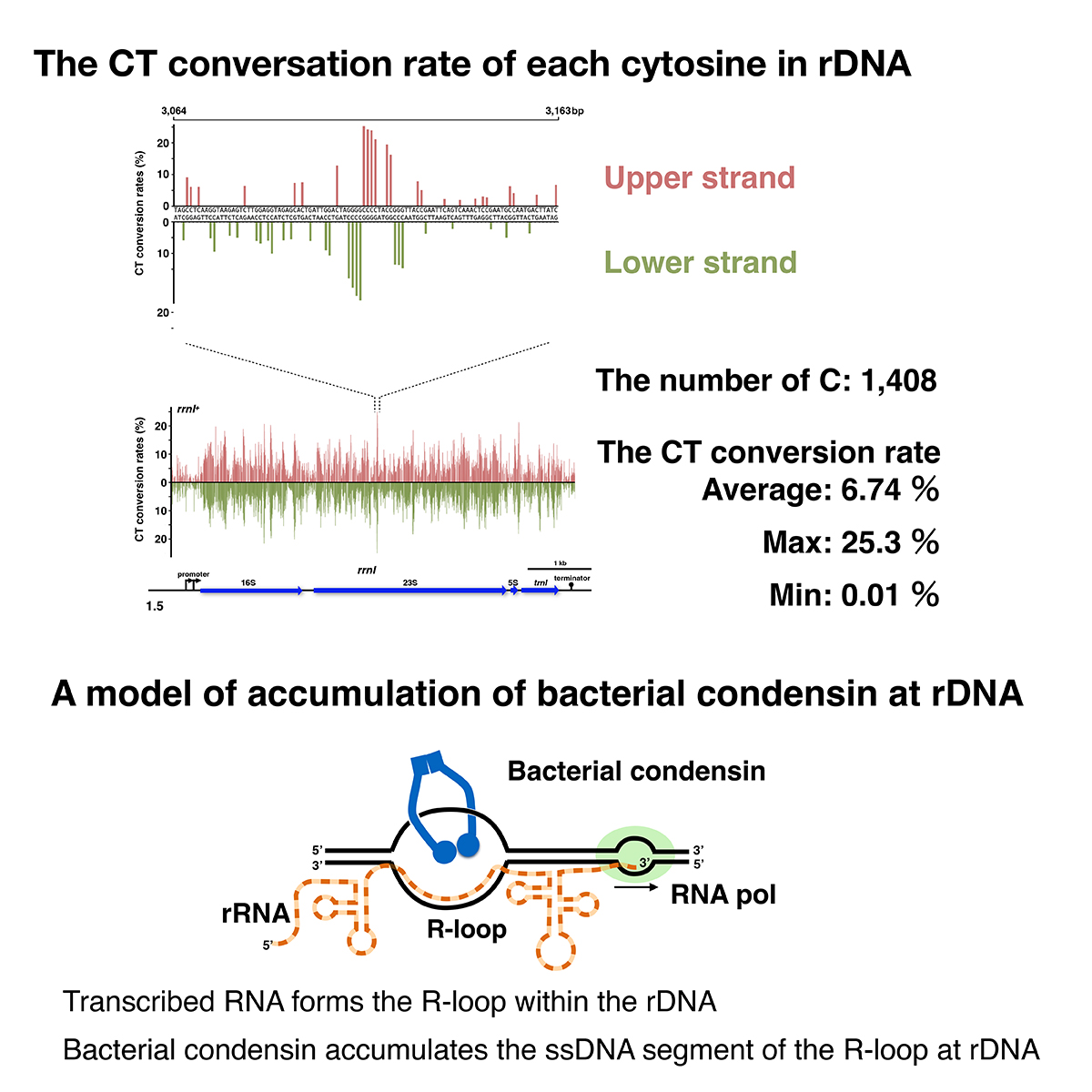A single-stranded DNA segment in rDNA for bacterial DNA condensation
Niki Group / Microbial Physiology Laboratory
Profiling a single-stranded DNA region within an rDNA segment that affects the loading of bacterial condensin
Koichi Yano, Hideki Noguchi, Hironori Niki
iScience (2022) 25, 105504 DOI:10.1016/j.isci.2022.105504
Bacterial condensin preferentially loads onto single-stranded DNA (ssDNA) in vitro and onto rDNA in vivo to support proper chromosome compaction. Thus, the actively transcribing rDNA would provide the ssDNA region for the loading of bacterial condensin. We attempted to detect the ssDNA region in the rrnI gene in situ. Non-denaturing sodium bisulfite treatment catalyzed the conversion of cytosines to thymines (CT-conversion) at the melted DNA of a genome. Using next-generation sequencing, we generated an average of 11,000 reads covering each cytosine on the rDNA segment. In principle, the CT-conversion rate is an accurate guide to detect ssDNA segment. We detected multiple ssDNA segments throughout the rDNA. The deletion mutations of the rDNA hindered the ssDNA formation at the 100-500 bp segment downstream of the promoter. These data support the idea that the ssDNA segment plays a crucial role as the condensin-loading site and suggest the mechanism of condensin loading onto rDNA.
















